Early Church
In the Early Church, the first order of ministry was the deacon who preaches the word and does outreach. Stephen was among the first deacons appointed, Acts of the Apostles 6:1-7.
The bishop or overseer was the successor to the apostles.
Episcopas is the Greek New Testament word for overseer, from which we derive episcopal and bishop. In the NRSV version of the Bible, it is translated as overseer, bishop, guardian.
The use of the word, episcopas, is limited in the New Testament and is found in several books that are considered to be written later.
Acts 1:20 In reference to Matthias being chosen to replace Judas, “Let another take his position of overseer”.
Psalm 109:8 is quoted (remember NT quotes from Septuagint).
Philippians 1:1 “Paul and Timothy, servants of Christ Jesus. To all the saints in Christ Jesus, who are in Philippi with the bishops and deacons.”
An early reference to the office of the bishop.
Titus 1:7-9 “For a bishop, as God’s steward, must be blameless; he must not be arrogant or quick-tempered or addicted to wine or violent or greedy for gain; but he must be hospitable, a lover of goodness, prudent, upright, devout, and self-controlled. He must have a firm grasp of the word that is trustworthy in accordance with the teaching, so that he may be able both to preach with sound doctrine and to refute those who contradict it.”
Demonstrates that the role is present, probable date of the Letter to Titus is 100 – 125 CE, and is evidence of a bishop’s role as teacher and defender of the faith.
From the Consecration of a Bishop (BAS), to be in all things a faithful pastor and wholesome example for the entire flock of Christ.
1 Timothy 3: 1-7 is a similar text to Titus 1:7-9.
1 Peter 2:25 reference to Jesus being guardian of your soul.
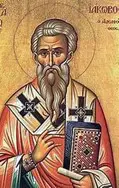 St. Ignatius
St. Ignatius
An early reference for a bishop is in the letters of St. Ignatius. He was the 2nd bishop of Antioch in Syria. St. Ignatius wrote seven letters on his journey to Rome to be martyred c. 115 CE.
Antioch was a major Christian centre. Paul and Barnabas were commissioned there for their missionary work to the Gentiles (Acts 13:1-3). The Gospel of Matthew is thought to be written at Antioch.
Reference: For All the Saints: Prayers and Readings for Saints Days p. 308
Letters of Ignatius: Smyrnaeans
Flee from schism as the source of mischief. You should all follow the bishop as Jesus Christ did the Father. Follow, too, the presbytery as you would the apostles; and respect the deacons as you would God’s law. Nobody must do anything that has to do with the Church without the bishop’s approval. You should regard that Eucharist as valid which is celebrated either by the bishop or by someone he authorizes. Where the bishop is present, there let the congregation gather, just as where Jesus Christ is, there is the Catholic Church. Without the bishop’s supervision, no baptisms or love feasts are permitted.
Dealing with schism and the Judaizers are themes in St. Ignatius’ writings. Docetism was a heresy at this time. Following the bishop, presbytery and deacons is a strategy to maintain the unity of the church. Note that the celebration of the Eucharist is done by the bishop or someone he authorizes.
This letter reflects the three-fold order of ministry: bishop, presbyter and deacon about a generation after the apostles. However, it would be the 4th century before the three-fold order of ministry was used across the church. The orders of deacon, priest, and bishop evolved over a period, and was affected by geography i.e. initially things were done differently in different places.
Elder (presbyter): as the church in a city grew, it formed new congregations overseen by the bishop but each led by a presbyter; later a presbyter was called a priest.
The presbytery appears to be a council of presbyters in the church.
The Anglican Church of Canada
A look at the history of the Anglican Church in Canada shows the role of bishops in the growth and maintenance of the church.
The Church of England in Canada
British North American was the name given to British colonies and territories after the United States became independent in 1783, which included Nova Scotia, St. John’s Island (Prince Edward Island), Newfoundland, Quebec and the Hudson Bay Company territories. Loyalists and exiles from the American Revolutionary War began to settle in British North America.
Quebec was divided into Upper and Lower Canada by the 1791 Constitution Act. Treaties followed with indigenous peoples and settlers soon afterward.
The Society for the Propagation of the Gospel (SPG) and the Church Missionary Society (CMS) were founded for international outreach of the Church of England. These societies started congregations of the Church of England in Canada. Initially Canadian Dioceses were overseas dioceses of the See of Canterbury.
As the church grew, it necessitated the appointment of a bishop in British North America. A bishop was required to appoint Incumbents, confirm people, consecrate deacons and ordain priests.
Bishop Charles Inglis was made Bishop of Nova Scotia in 1787, the first Bishop in Canada. The Diocese of Quebec was established in 1793, and the Diocese of Toronto in 1839.
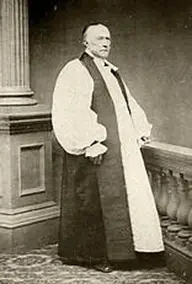 Bishop John Strachan
Bishop John Strachan
Archdeacon John Strachan was made the first Bishop of Toronto, holding office from 1839-1867. His story is part of Algoma’s story as the first parishes in Algoma were Indian missions at St. Luke’s in Sault Ste. Marie and on Manitoulin Island in the 1840’s.
Bishop Strachan demonstrated the leadership required of a bishop to address problems in the church and in his diocese.
The church in the colonies in the British Empire was growing. Between 1815 and 1850 nearly a million people emigrated from Great Britain to British North America. The growing number of parishes was more than one bishop could manage. New dioceses were needed to have a bishop to supervise new parishes and raise up and ordain new clergy.
The Mackenzie Rebellion happened in 1837 in Upper Canada. Upper Canada was governed by an elite called the Family Compact, and there was a desire for a more representative government. Lord Durham was sent to study the situation and report back to the crown. In response to the Durham Report, the British parliament passed the Act of Union, uniting the colonies of Upper and Lower Canada into the Province of Canada, and it was proclaimed in 1841. Upper Canada became Canada West and Lower Canada, Canada East.
The problem of creating a new diocese was that the Parliament of Great Britain could only create a new diocese in a colony, and it was not a priority for the government to do so. Through the leadership of Bishop Strachan, in 1857 the legislature of the Province of Canada passed legislation to create the Diocese of Huron. The Province of Canada passing legislation to create a diocese was a work-around the Parliament of Great Britain, and it set a precedent in the British colonies.
Establishing Diocesan Synod
Bishop Strachan provided leadership in establishing the first diocesan synod in the British colonies, so that the church would have stable funding.
The Church of England (C of E) in Canada was initially funded by the crown, i.e. it was an established church. One seventh of the public lands in Upper and Lower Canada had been reserved as a clergy reserve for the maintenance of a ‘Protestant clergy’ in the 1791 Constitutional Act, which in practice supported the C of E.
In 1840, the clergy reserve was changed to support the Church of Scotland clergy as well as the C of E. At this time, the British government reduced grants to missionary societies, which meant Canadian churches had to become more self-funding.
In 1854, the Province of Canada passed a bill transferring the clergy reserve-sale proceeds to the Municipalities Funds of Upper Canada and Lower Canada. In effect, this disestablished the Church of England and removed a significant source of its income.
To raise funds by collecting an offering during a worship service, the church needed lay representation in its governance. Experiments were tried throughout the British colonies. This was first discussed in the early 1830’s in British North America, and Archdeacon John Strachan developed a proposal for a clergy convocation in 1831, but it was not until 1851 that as Bishop he was able to organize informal meetings of clergy and laity. These informal synods pressured the legislature of the Province of Canada to pass legislation in 1857, to enable the C of E to meet in synod and make decisions, instituting the first of such synods in the British colonies. Canada set a precedent that allowed for the civil government to set up a church corporation to govern itself. This soon spread throughout the British Empire.
A synod is now the legislature of a diocese, province or national church, and it is comprised of bishop(s), clergy and laity. Synod meant the Bishop shared power with clergy and laity.
Bishop Strachan was a controversial figure, and only a part of his story is told here. It is sufficient to illustrate the leadership that he as the Bishop brought to his diocese, and the need to have bishops to raise up clergy and support parishes. Synods have become a feature of the global Anglican Church, which gave the church the ability to adapt and led to the expression, an Anglican diocese is ‘episcopally-led and synodically governed’.
Ecclesiastical Provinces and General Synod
- Province of Canada 1861
- Province of Ontario 1862
- Province of Rupert’s Land 1875
- General Synod 1893
- Province of British Columbia and Yukon 1914
Creating the Province of Canada meant that Canada could now pass its own church law, and the Canadian church could consecrate its own bishops. As the number of dioceses increased, new provinces were created by subdividing an existing province.
General Synod renamed The Church of England in Canada as the Anglican Church of Canada in 1955.
Notable Bishops of Algoma
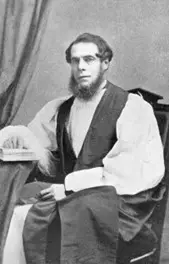
Frederick D. Fauquier (1873-1881) was the 1st Bishop of Algoma.
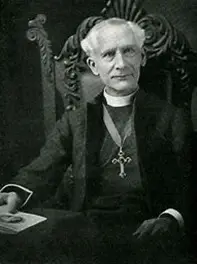
George Thorneloe (1927-1939) led the Diocese into becoming self-governing, instituting the first Synod of the Diocese of Algoma in 1906. He was Metropolitan of Ontario and the 2nd longest serving Bishop at 30 years.
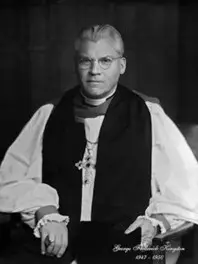
George Kingston (1939-1944) was the 1st Canadian priest to be made Bishop of the Diocese. He was translated and became Bishop of Nova Scotia and later made Primate in 1947.
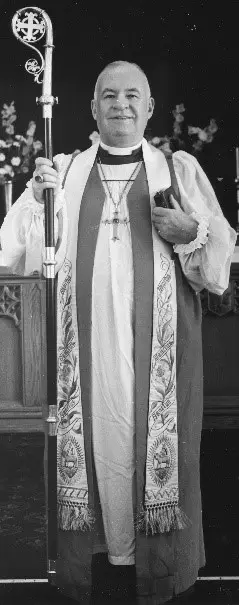
William Lockridge Wright (1944-1974) was the 1st priest of the Diocese to be made Bishop of the Diocese. He led the Diocese to become self-supporting in 1956. He was Metropolitan of Ontario and the longest serving Bishop at 30 years 6 months.
Reference: By Grace Co-workers: Building the Anglican Diocese of Toronto 1780-1989; Alan L. Hayes Ed.
Seeds Scattered and Sown: Studies in the History of Canadian Anglicanism edited by Norman Knowles.
Lambeth Quadrilateral
- The Holy Scriptures of the Old and New Testaments, as ‘containing all things necessary to salvation’, and as being the rule and ultimate standard of faith.
- The Apostles’ Creed, as the baptismal symbol; and the Nicene Creed, as the sufficient statement of the Christian Faith.
- The two sacraments ordained by Christ himself – Baptism and the Supper of the Lord – ministered with unfailing use of Christ’s words of institution, and of the elements ordained by him.
- The historic episcopate, locally adapted in methods of its administration to the varying needs of the nations and peoples called of God into the unity of God’s Church.
The Lambeth Quadrilateral was first adopted by the Episcopal Church as the Chicago Quadrilateral in 1886. It was adopted at a Lambeth Conference in 1888 as a basis on which approach may be by God’s blessing made towards home reunion. The Lambeth Conference is an international meeting of Anglican bishops. The idea for the Lambeth Conference was suggested by Bishop Strachan.
The point of sharing the Lambeth Quadrilateral is to underscore how important the historic episcopate to the Anglican concept of the church.


